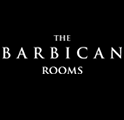London is home to a great many monuments and iconic buildings.
With a long past spanning back millennia, it’s not surprising to find this city teeming with historically rich attractions. Whether you’re staying at the M by Montcalm in Shoreditch or 5 star luxury hotels in London West End, you’ll be just a stone’s throw away from architecture and relics with hundreds of years’ worth of stories to tell.
One such attraction is the Tower of London, one of the most popular castles in the country that’s easy to reach from many of the best accommodations in London. Every visitor to the city should explore the rich tapestry of history and entertainment available at the Tower. With a range of traditions dating back to the 11th century, the Tower of London is one of the most engrossing ways to get in touch with the city’s history.
Below is everything you need to know about the Tower of London, its multitude of uses and present-day role in London’s tourist circuit.
What is the Tower of London?

The Tower of London dates back to the year 1066, and has had multiple uses over its existence. From imposing fortress to 18th century zoo, the Tower of London has become a symbol of the city, constantly shifting in purpose and meaning.
With expansions having taken place over almost a thousand years, the tower is made up of an inner ward, an outer ward, an innermost ward and the iconic White Tower. The legendary symbol of the city is currently open to members of the public, with tours being held on a daily basis.
Early history of the tower of London
The Tower of London dates back to after the Battle of Hastings in 1066, when over the decades following his victory, William the Conqueror and his followers built over 30 castles across the country. The Tower of London was built as a strategic defence against any remnant supporters of the defeated King Harold, and also as a symbol of the incoming Norman rule of the country.
The Tower and the War of the Roses
Over the next 200 years, the tower was expanded and acted as a fortress during the War of the Roses. This 15th century period saw the castle attacked in 1460 by a York supporting army. After this siege, extensive defences were built into the existing tower structure, giving it the fortifications needed to survive explosive and aerial assaults.
The Princes in the Tower
One of the most notorious events to take place in the Tower of London was the disappearance and alleged murder of Princes in the Tower.
In 1438, young heirs to the throne Edward V and his brother Richard were too young to rule the country after their father’s death and were thus placed under the care of Lord Protector Richard of Gloucester. During their stay in the Tower of London, it is alleged that Richard of Gloucester had them murdered so that he could take the throne, becoming Richard of York later that same year. The current tours of the tower bring you up close and personal with the room believed to be the scene of the crime.
The Tower as Prison

The tower has acted as a prison for hundreds of years, having been the place of execution for Tudor figures such as Anne Boleyn and even housing the notorious Kray Twins in the 1950s. The dungeons of the tower were an infamous torture spot during the 16th and 17th centuries, and the grisly goings-on are fully realised in the Tower’s chilling exhibits.
The Tower as a menagerie
From the 13th century, the Tower of London acted as a zoo for a wide range of exotic animals.
Recent archeological sites on the grounds of the castle have shown remnants of leopards, an elephant and even a lion! The menagerie persevered into the 19th century when the terrible living conditions of the animals finally meant that it was shut down and the remaining animals shipped to zoos across the country.
The Crown Jewels and the Tower of London

The Crown Jewels are one of the main attractions at the Tower of London, traditionally having been the spot where they’re stored. Currently, the Jewels are on display in the Waterloo Block’s Jewel House and include the 800-year-old Coronation Spoon, 23,578 gemstones and the iconic St Edward’s Crown.
The tower in the 20th century
After its varied role as a centre for exoticism and execution, the Tower finally became more of a historic sight rather than an entertainment zone as it was in the early 19th century with its collection of animals. During World War II, the Tower of London was severely damaged by the Blitz and rebuilt over the next few decades.
Things to do at the tower of London
Nowadays, the Tower of London is a tourist destination with daily guided tours and exhibits. For some, a tour is even better than a spa break in London! Guests can enjoy the many warrens and chambers of the Tower, rebuilt to resemble their medieval majesty. Furthermore, there are still a range of traditions and military routines undertaken at the tower.
The first of these is the Ceremony of the Keys, performed by the Yeomen Warders at the end of the day. This is an ancient tradition which takes place every evening at exactly 9:53 PM and includes a series of phrases spoken between the Yeomen and a guard before each of the towers gates are locked. After this, the Warder takes the keys to the tower back to the Queen’s House where they are secured during the nighttime.Another tradition includes the keeping of a group of ravens in the tower premises. There is still a raven master who looks after these birds, upholding the superstition that if the ravens leave the Tower, then the country will fall.
How to get to the tower of London?
The Tower of London is located near Tower Hill tube station on the District Line, easily reachable from most parts of the city and the perfect stop off before or after hitting West End bars.
If you’re looking for a less busy time to visit the Tower, try arriving for opening at 9:30 AM on Tuesday to Saturday and 10 AM on Sundays and Mondays. This will guarantee less of a queue and more breathing space during your visit.

















